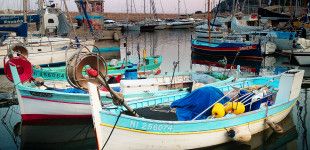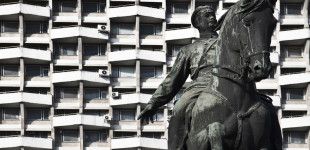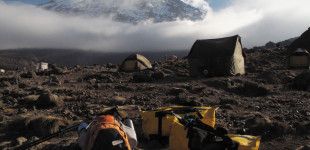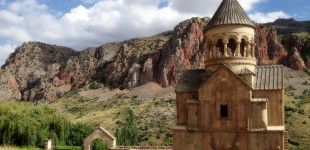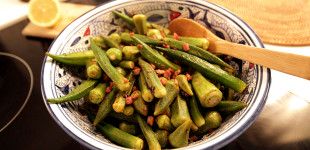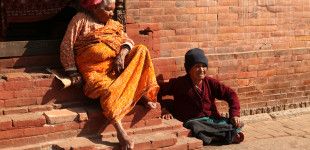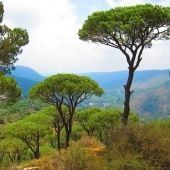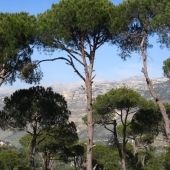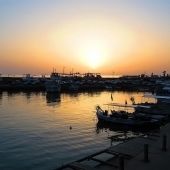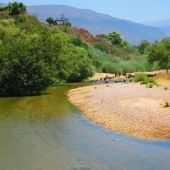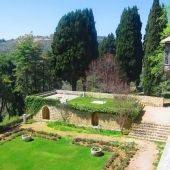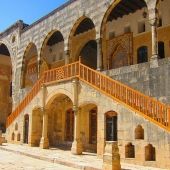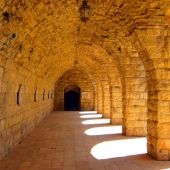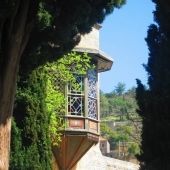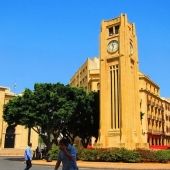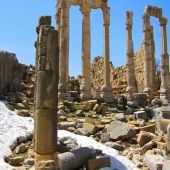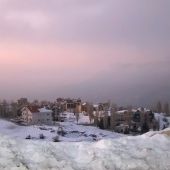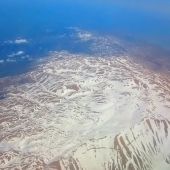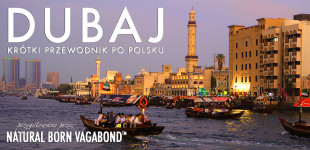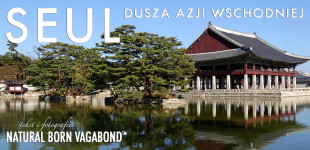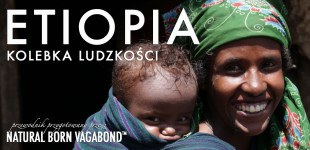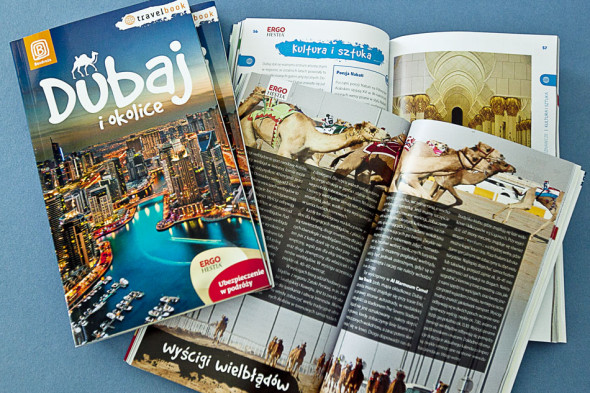Welcome travelers!
Natural Born Vagabond™ is a bilingual (English and Polish) site devoted to travel photography and journalism. Here you can find images and articles from our remote travels. The ambition of the creators is to share the best stories with those who crave wilderness and adventure. If you would like to share your opinions or travel stories please contact us via e-mail.
Featured
Natural Born Vagabond™
Beirut — city of many cultures
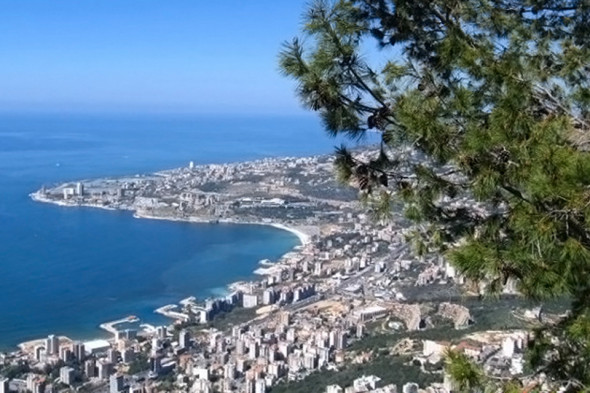
Beirut, Lebanon — view of the coastline. Photo by Zeina Eid
Although recent history has seen Beirut with its fair share of strife, a visit to the city reveals why it was once known as the “Paris of the East”. Since the end of the Lebanese Civil War (1975-90) the city has slowly regained some of its former prosperity and swagger. Coastal terrain and proximity to the mountains make this scenic location an attractive Mediterranean destination for both short getaways and long sojourns. Rough beauty of the nature, complexity of the historical relations and fun-loving people add colour to each visit in the capital city of Lebanon and its environs.
Humans have inhabited present-day Lebanon as far back as 7,000 years ago. As a cross-road of many cultures, today it is a religious mosaic with around 17 sects populating the Mediterranean country and adding character to the nation’s landscape. The diversity of the country’s religious fabric is on display in the churches and mosques of all variants (e.g. Shia, Sunni, Catholics, Orthodox, Druze, etc.) peppering the city’s densely-packed neighbourhoods. We were very fortunate to have spent Easter 2012 in the jewel of Levant. During the Christian holiday the churches are open to people of all faiths (and those of no religion) until late night. Touring the ancient holy sights is not only an experience steeped in beauty, but it also elicits contemplation of the human spiritual condition and its place in the 21st century. This feeling is so apt since the country and city stand as a testament to the struggles and successes of mankind.
One of the most unique features of Lebanon’s landscape — especially for those fortunate enough to have grown up in places without armed conflict — is the urban architecture that vividly displays the nation’s historical turbulence: Buildings pock marked with bullet holes from the Civil War have been left intact as a reminder to the Lebanese of the horror of war. As a relic of the country’s unrest, basic infrastructure has yet to return as electricity shortages are frequent. But as we learned, true to the nation’s fun-loving spirit, neither electricity shortages nor the perils of conflict impede the Lebanese from enjoying life — the party must go on!
The unique charm and atmosphere of Beirut are a product of its cosmopolitan inhabitants. On the streets you will hear a lovely humming mix of French, English and of-course Levantine Arabic. International influences are also seen in the local fashion scene. Even the most demanding fashionistas will appreciate the fashion culture in this uber chic city! The best shopping in Beirut, in our opinion, is offered by small privately-owned boutiques scattered around the city. Shop windows — especially from such boutiques — elegantly display a full spectrum of bold colours and designs.
If you decide to explore the countryside of Lebanon, do not forget the town of Baalbek, where you can explore one of the largest Roman ruin complexes in the world. (It will impress even those who have been to the Colosseum in Rome!) The annual Baalbek International Festival of art and culture is also worth checking. For those who enjoy wine, Ksara Vineyards are not to be missed. (Yes, parts of the Arab world do produce wine, even as more conservative areas and populations shun it.) For white wine lovers, we recommend Blanc de Blancs — a blend of Chardonnay, Sauvignon and Semillon grapes with a subtle flower aroma. This wine, along with olives and rose petal products, is amongst the nation’s finest gourmet exports. And of course, no journey to the country is complete without a visit to the Cedars of God or simply the Cedars of Lebanon — after all, the cedar tree is the national symbol and emblazoned on the flag. To give perspective to the longevity of the cedars, some were around at the time of Jesus! And in spite of its Mediterranean climate the country is also a popular skiing destination thanks to a mountain range (Mount Lebanon) that spans 170 km averages over 2,200 metres above sea level and reaches a maximum of 3,088 metres (Qurnat as Sawda) and is covered by 4-metre deep snow.
On the way to the Shouf Cedar Nature Reserve, a must-see is the Beiteddine Palace standing on top of a terraced hill, astonishingly well-preserved from the 19th century. Inside, the history of the Chouf unfolds like an open book, from political intrigues to artistic tales. Marvel at the unique local architecture with intricately carved cedar-tree ceilings, marble floors, typical Mandaloun stained glass balconies, vast courtyards with flowing fountains and lush gardens. If you have opportunity do check summer Beiteddine Art Festival with music performances and art exhibitions.
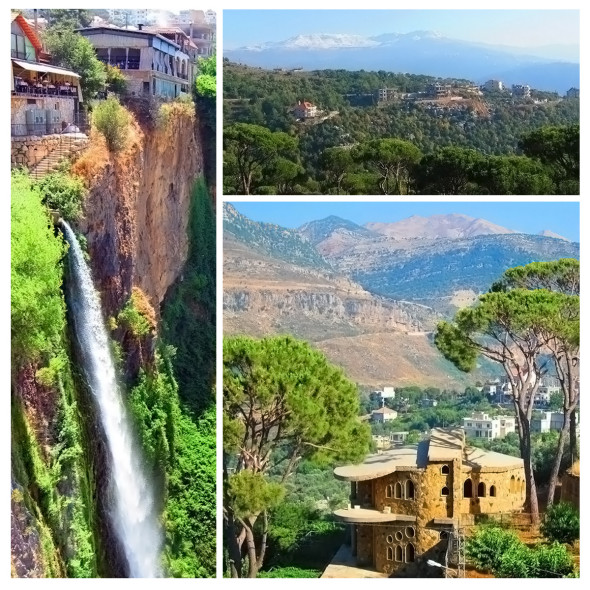
Lebanon Countryside. Photo by Zeina Eid
We owe our fun memories to Zeina and Martin — great friends/guides who introduced us to the best sights of Lebanon.
Below are recommendations from our lovely guide, Zeina Eid a Beirut-born, English-Arabic translator, who currently works and lives in Dubai, UAE. Shoot her anif you are planning a trip to Beirut. She jokes that if you pay for her ticket to Beirut she may help you out with planning your trip and showing you around Lebanon. Zeina is not only a great guide but can also give you a true Middle-Eastern driving experience with the grace of a rally-car driver… Unforgettable experience guaranteed!
Jounieh
This is the area whose picturesque bay is featured on many postcards. There is so much to do in and around Jounieh including: walking in the Old Souk (souk, sometimes spelled souq, is the Arabic word for market), where old stone homes with tiled roofs have been renovated and now serve as stores; taking the gondola up the mountain towards Harissa and admiring the area from the top; or enjoying some fresh seafood at Maalouf’s, the best spot for lunch to take in the sounds of the gentle waves of the Mediterranean Sea from a breath-taking view of the city’s coastline.
Worth checking:
La Creperie. A charming old house-cum-restaurant perched on a cliff, where you can savour tender, nicely-seasoned baby chicken, sample great desserts such as profiteroles, and gaze at the sprawling views of the mountains cascading down to the bay.
Smurfs. A lovely cottage-style restaurant great for warming up by the chimney in the winter, and relaxing on the spacious terrace in September during the beer festival.
Kaslik. This street, which is considered as an extension of Jounieh, is lined with big brand stores and lively street cafes. Try Khaymet El Sanyour for some local manakish with shisha.
Byblos
Just 30 minutes north from Jounieh, immerse yourself in Lebanon’s rich history in the ancient town of Byblos, a place that is thought to be the oldest continuously-inhabited city (and port) in the world. In an archaeological park that faces the Mediterranean, you will find remnants of a 7,000- year-old fishermen village, a Roman amphitheatre and a crusader’s castle. In the nearby souk, you will find millions-of-years-old fossils of extinct species for sale with a certificate of authenticity and a host of souvenirs, ranging from the famous Phoenician statuettes and alphabet tablets to traditional garments and accessories. And of course, do not miss out on lunch in one of the seafood cafes overlooking the old Phoenician port where the activity of boats coming in and out of the harbour may inspire even the most crusty land lovers to sail across the Mediterranean.
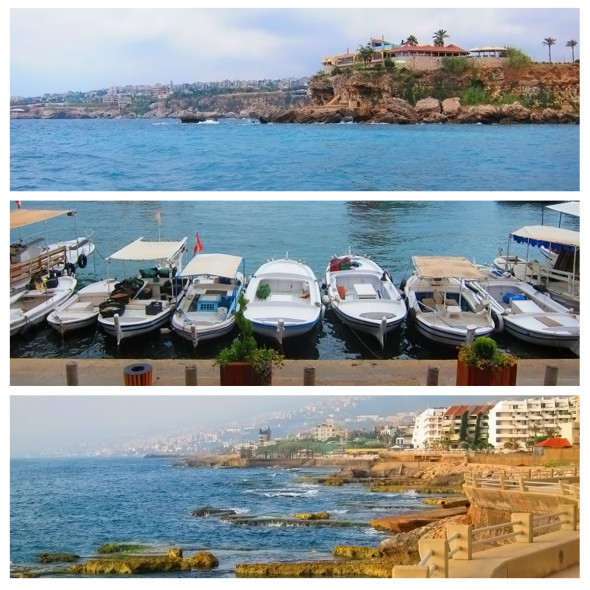
Lebanon — coastline. Photo by Zeina Eid
Harissa/Jeita
Some of the best views of Lebanon can be seen from Harissa (and nearby Jeita, famous for the Jeita Grotto caves), where all of Beirut stretches before the eyes. From the downtown through to the port, up to the northern coast, with the backdrop of the pine tree covered mountains, this vista is truly the Mediterranean at its best! And if you do take a stroll in Harissa to soak in the view of Beirut you will certainly build up an appetite. Luckily, you need not venture away from the town to find the terrific Teleferic (or gondola) restaurant and terrace for a great lunch spot in the open air with the same stunning scenery.
For those wishing to travel along the coast, driving up from Harissa towards Kleiaat and then down to Jeita is the best way to avoid traffic on the congested highways. This route is a pleasant 30-minute ride that offers amazing vistas of the mountains and the sea. Jeita’s main attraction is Jeita Grotto, a finalist in the 2013 project to name the 7 natural natural wonders of the world. At the Grotto, the upper larger cave is best explored on foot. There millions-of-years-old stalactites and stalagmites recreate a fantastic illusion of a winter wonderland. It is truly a spectacle to behold and an once-in-a-lifetime experience.
Downtown Beirut
Downtown Beirut is without a doubt the heart of the city. From the Martyr Square, take a stroll around the renovated city centre where cafes and restaurants welcome visitors for some shisha and Lebanese delicacies. Rooftop cafes on the Virgin and Al Nahar – buildings, as well as the Le Gray hotel, offer great panoramas of Beirut and its port. Zaitunay Bay is another hot spot where you can walk on a wooden deck along the marina and admire the majestic yachts docked there. Coffees, burgers, ice cream and even drinks are available at the bar and restaurants along the marina. In late hours (past 11 PM and until the sun rises — they party really late in Beirut!), experience a party the Lebanese way at the Buddha Bar or the Music Hall. For a more casual night out, head to the neighbouring Gemayzeh Quarter to enjoy real European-style bar hopping. One particularly interesting spot is El Guardel which offers Hispanic food to the sound of Latin beats.
More good addresses:
Leila or Ahwet El Ezzez. With its large glass facades and its laid-back atmosphere, this café is the place where you can get a glimpse of the social scene, with people smoking shisha while engaging in lively conversations over a round of backgammon.
Le Grand Café Raouche. A good address to rest after a long day of shopping at the many designer stores in downtown Beirut. It also offers an opportunity to partake in what seems to be Lebanon’s national pastime (and one that is shared by all the different groups that form the country’s mosaic) — shisha. Whilst puffing away on shisha at Le Grand Café Raouche there is also a chance to enjoy another icon of Beirut, the Pigeon’s Rock (a rock formation in the sea facing the community of Raouche).
Photos and attractions roundup by Zeina Eid.
Natural Born Vagabond™, December 2013


